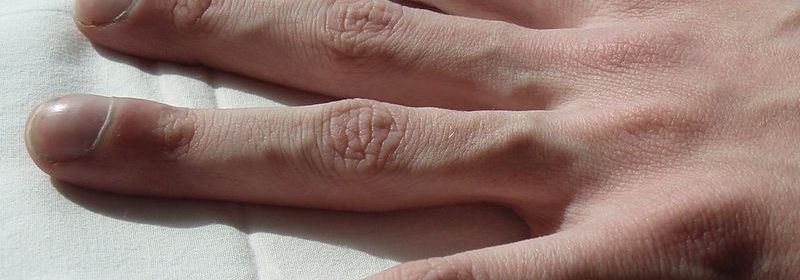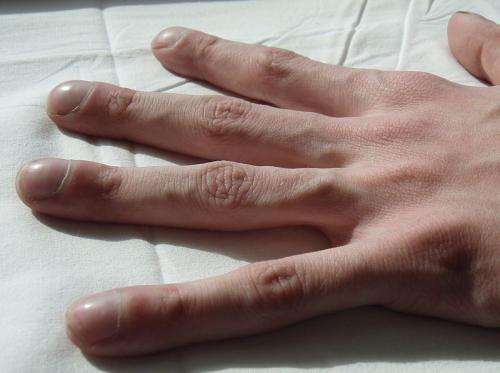Cystic fibrosis treatment shown to be safe and efficacious for kids six and older

Researchers at the Children’s Hospital Colorado Breathing Institute, the largest pediatric cystic fibrosis (CF) clinical care center in the U.S., participated in the pivotal international multi-center Phase 3 clinical trial, sponsored by Vertex Pharmaceuticals Incorporated, leading to FDA approval of TRIKAFTA (elexacaftor/tezacaftor/ivacaftor), a highly effective CF treatment, for patients ages 6 through 11 who have at least one copy of the F508del mutation.
Alongside the TRIKAFTA trial for patients 12 and older, the team led by Edith Zemanick, MD, pediatric pulmonologist, a principal investigator of the study and associate professor of pediatrics at University of Colorado School of Medicine on the Anschutz Medical Campus, aimed to prove that TRIKAFTA is safe and efficacious in even younger patients, as early treatment initiation is likely to prevent disease progression. The international study was conducted across 21 sites in five different countries. Children’s Hospital Colorado, in partnership with the Colorado Clinical and Translational Sciences Institute, enrolled participants who were monitored over 24 weeks of treatment. The study led by Zemanick demonstrated the safety and efficacy of TRIKAFTA in children 6 through 11 years of age, consistent with those reported in adults and adolescents, supporting the use of TRIKAFTA in this age population.
“When TRIKAFTA was approved in 2019, it became the most effective CF treatment to date, substantially helping approximately 90% of people living with CF,” said Zemanick. “Because of the immediate, robust improvements observed in patients 12 years and older, we wanted to quickly evaluate whether this treatment would be safe and efficacious for younger patients. Until now, there was an unmet need in getting the most effective treatment for CF to younger children in order to prevent complications related to CF that are known to start early in childhood.”
TRIKAFTA, a combination of three molecule therapies, targets the underlying causes of the disease—a defective protein called the cystic fibrosis transmembrane conductance regulator (CFTR) protein. Most people with CF have minimal CFTR protein function. This treatment can improve the CFTR protein function substantially, which may lessen many of the symptoms and complications of CF.
In clinical trials, TRIKAFTA treatment led to remarkable improvements in several key measures of disease including:
- Improved lung function by 10%
- Reduced frequency of pulmonary exacerbations (respiratory illnesses which require hospitalizations and antibiotic therapy)
- Improved weight and body-mass-index (markers of nutrition) over 24 weeks
- Decrease in sweat chloride by an average of 61 mmol/L resulting in chloride values below the diagnostic level for CF for over 80% of children. (Sweat chloride test results generally confirm the diagnosis of CF based on a chloride value ≥ 60 mmol/L)
“When we’re able to start TRIKAFTA at an even younger age, the results are dramatic,” said Zemanick. “Many parents have commented they didn’t realize their child with CF wasn’t feeling well or didn’t have as much energy as other kids because their lungs weren’t letting them live up to their potential. Now they’re able to see what their child can do with better lung and nutritional health.”
Zemanick’s team is helping to lead a nationwide CF Foundation-sponsored study called PROMISE and The PROMISE Pediatric Study. Both studies will examine the long-term effects of TRIKAFTA therapy on airway infection and inflammation, digestion and pancreatic disease, cystic fibrosis-related diabetes and liver disease in the age groups of patients 12 and older and children 6 through 11 years of age.
In addition to long-term effectiveness studies, Children’s Hospital Colorado is participating in the BEGIN Study to look at the effectiveness of TRIKAFTA in infants and children under 6 years old once medication is available for that age group and the RARE Study to identify treatments for people with CF who don’t qualify for TRIKAFTA based on their underlying genetic mutations.
“Approving TRIKAFTA for younger kids is a tremendous step but our work is not done until we have a cure for CF,” said Zemanick. “We are leading local efforts in the RARE study to collect cells and biospecimens from the almost 10% of the cystic fibrosis population with rare mutations. This is to find a highly-effective disease-modifying therapy such as TRIKAFTA for the population of patients TRIKAFTA does not work for.”
Source: Read Full Article
